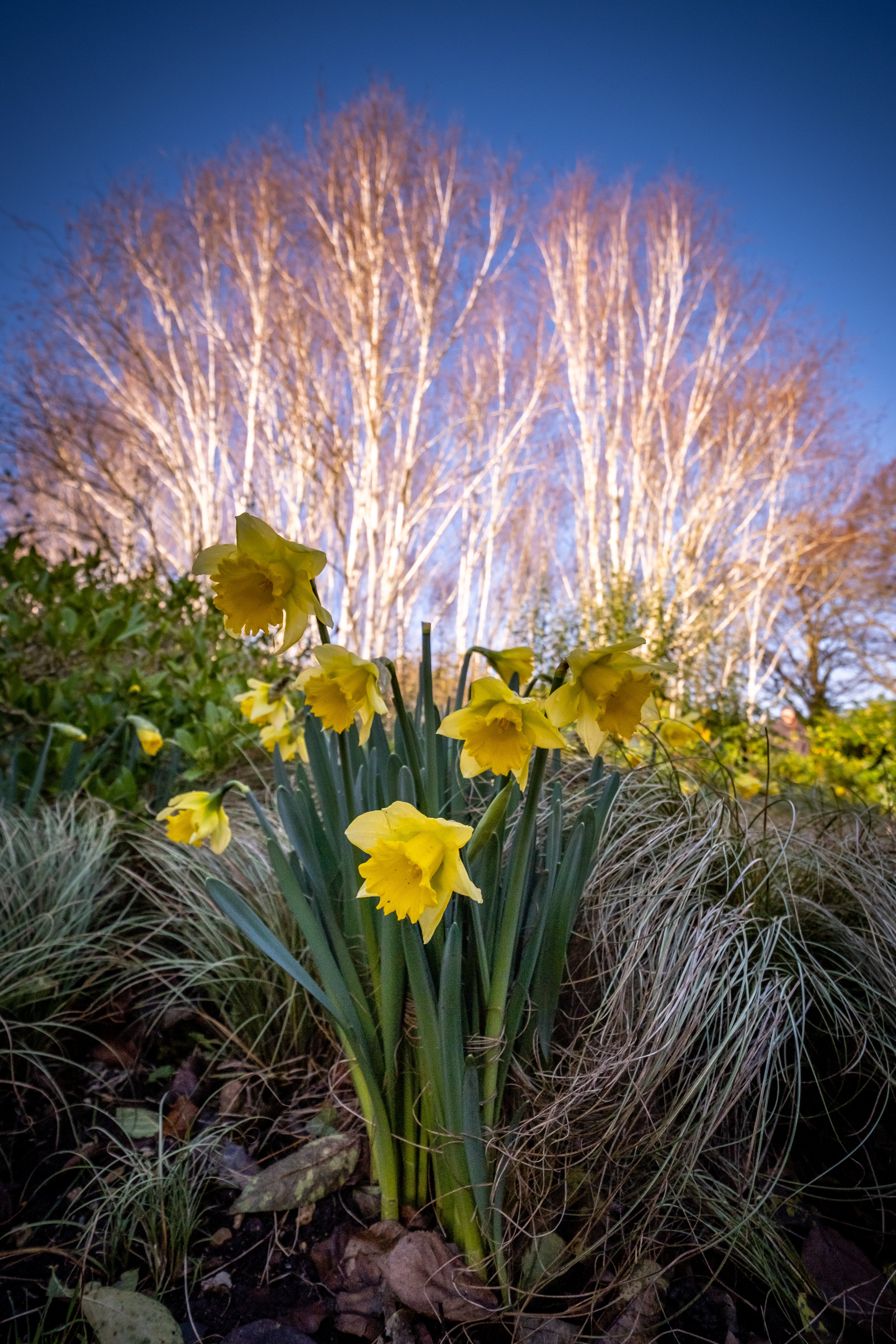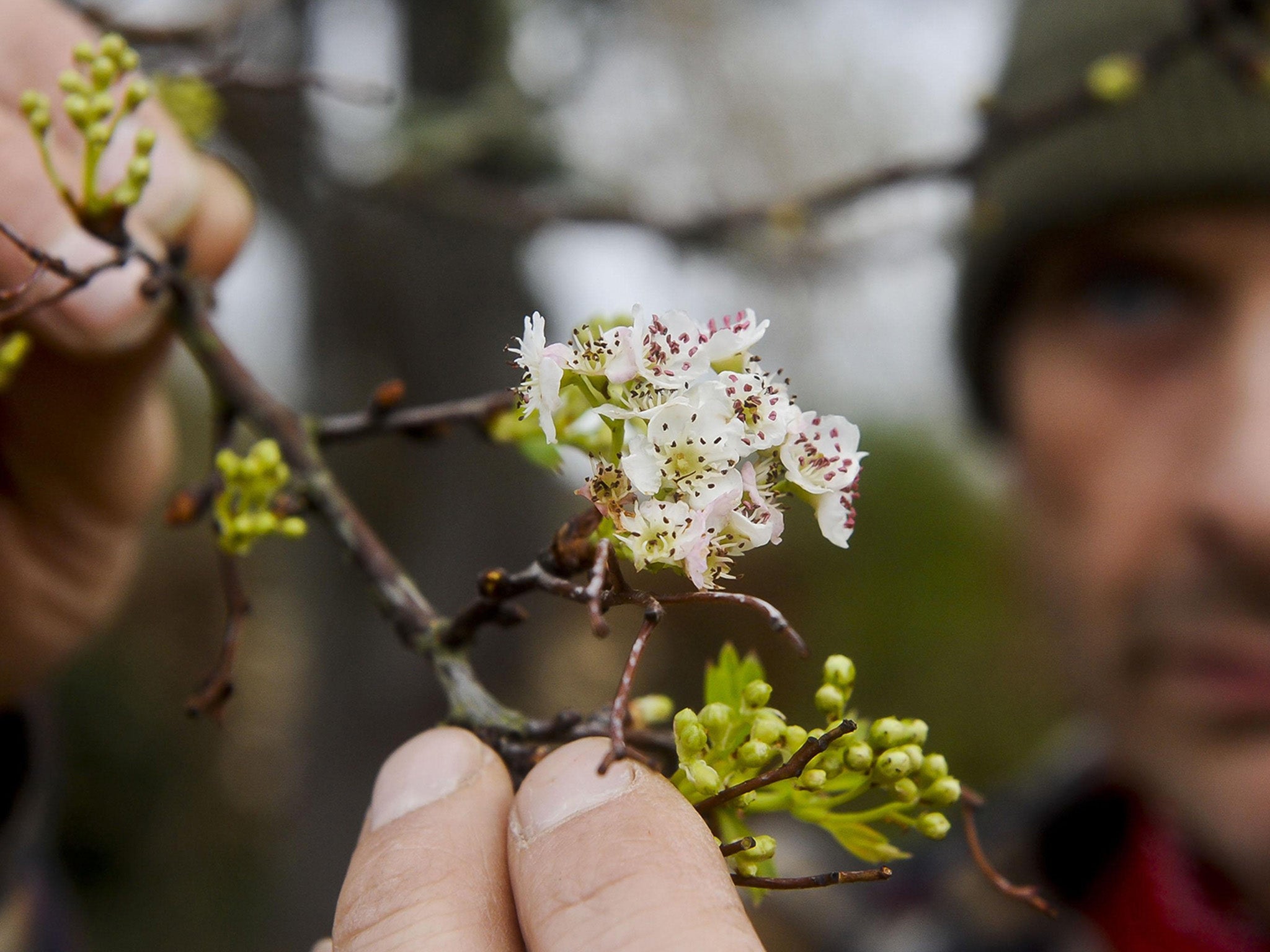Spring flowers bloom months early after record-breaking New Year heat
Botanists most concerned by early sightings of hawthorn and buttercups

Spring flowers are already in bloom after record-breaking warm weather in the New Year disrupted the life cycle of several UK plant species.
Flowers that are not expected to be out until at least April were seen in bloom this week, including hawthorn.
The Botanical Society of Britain and Ireland (BSBI) runs a New Year plant hunt in which volunteers record the plant species in bloom in their local area in the first few days of January.
The count has not yet been completed but the BSBI said that early tallys suggest there will be a record number of species observed this year.
Flowers such as daffodils, violets and irises were out two or three weeks early.
But botanists were most concerned by the flowering of the bulbous buttercup and the hawthorn tree – also known as mayflower – as they were not expected to be in bloom until April and May respectively.
The early bloomings follow an extraordinarly hot start to the year. The temperature on New Year’s Eve exceeded 15C across the UK for the first time on record before dropping sharply down to near-freezing in the days after.

Professor Tom Crowther, an ecologist at ETH Zurich University's Crowther Lab and UN ecosytems adviser, toldThe Independent that the early bloomers were at risk of dying in the cold snap.
He said: "Warmer temperatures are one of the signals that tell plants to bloom and leaf out, so a warm spell like this can send that message to plants.
"Unfortunately, early blooming can be extremely dangerous to plants because late frost can destroy leaves and blossoms that have emerged too early."
He said early blooming can be "hugely disruptive to ecosystems because species that rely on each other, like plants and insect pollinators, can get out of sync with each other."
The National Trust has seen daffodil and magnolia buds forming two to three weeks early in its gardens this year.
Rebecca Bevan, the National Trust’s Senior National Specialist for Cultivated Plants, said that there was varied response among different plant species to the unseasonable weather.
She told The Independent: “Many early-flowering plants such as snowdrops and primroses are well adapted to the fluctuations in temperature in winter and will flower early if its mild and keep going on and off into spring.

“Others such as magnolias, are less well adapted and will flower early in a mild year and then frequently have their fragile blooms destroyed by spring frosts.”
However, she said that all plants are vulnerable to the pests and diseases that can be more prevalent after a cold winter.
She added: “One of the key predictions about climate change is greater unpredictability and extremes.
“Climate change is certainly a challenge, and we don’t have all the answers, but we do have world-class gardeners and other experts exploring, testing and sharing solutions.”
Join our commenting forum
Join thought-provoking conversations, follow other Independent readers and see their replies
Comments
Bookmark popover
Removed from bookmarks